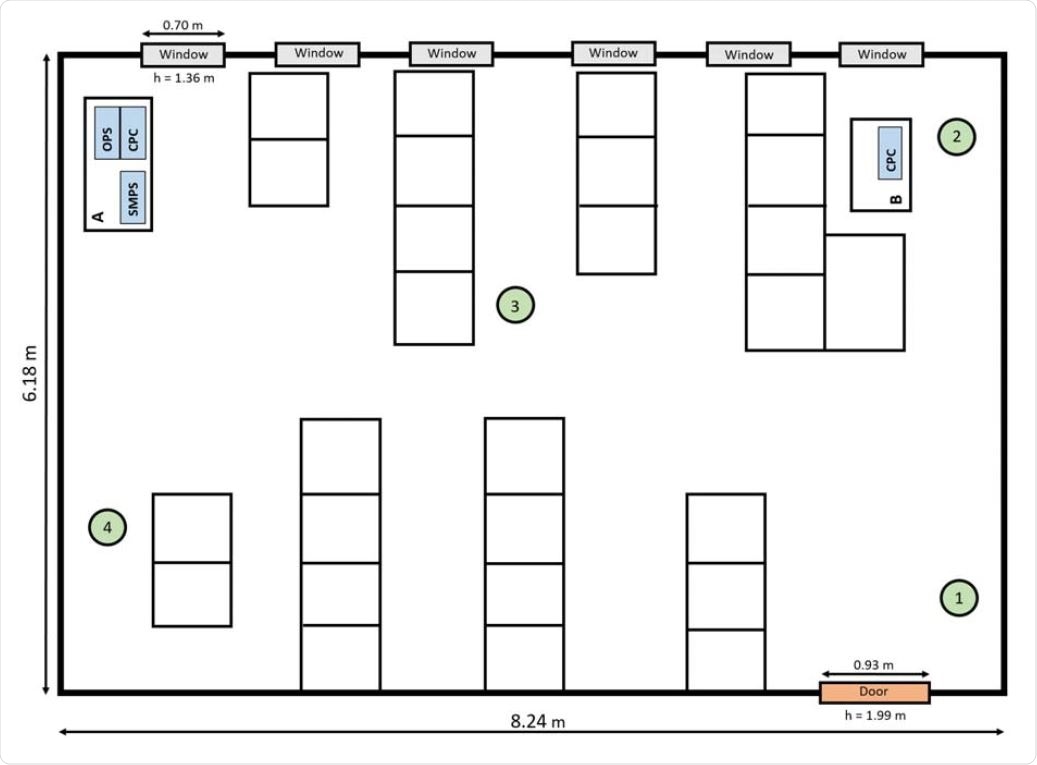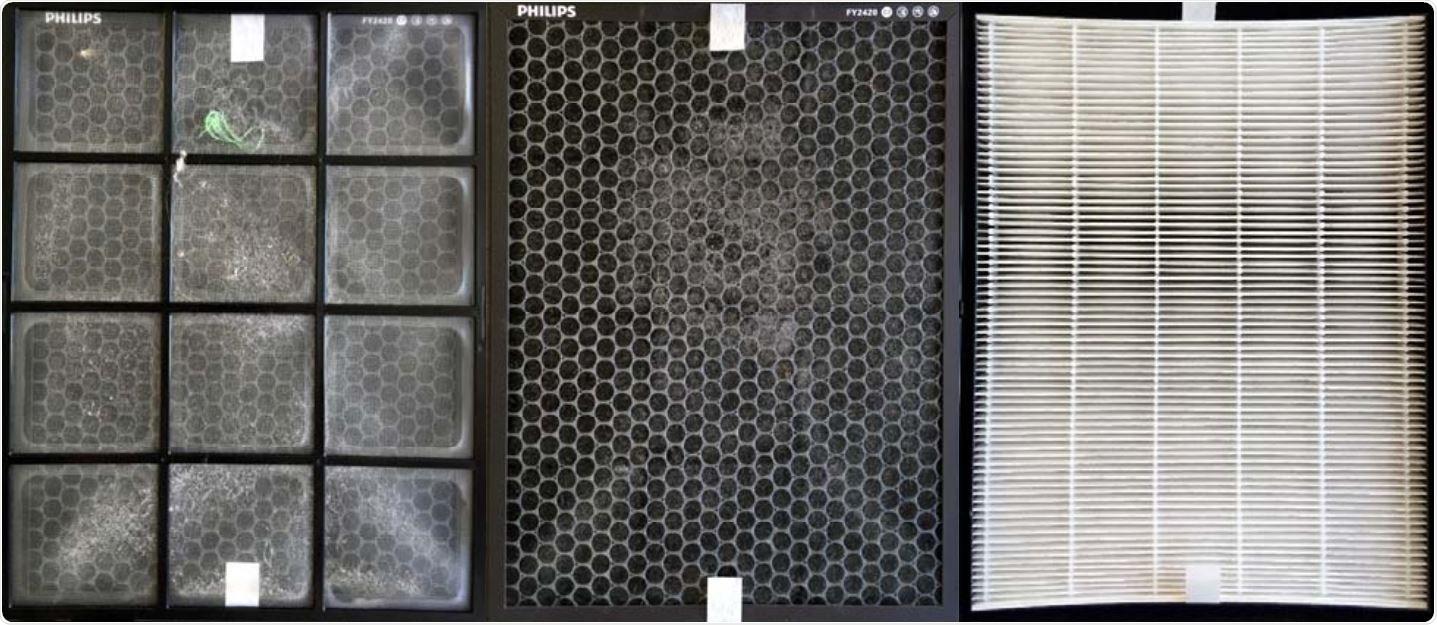Currently, three transmission pathways are being considered for coronavirus disease (COVID‐19): direct transmission through droplets, airborne transmission through virus‐containing aerosols, and fomite transmission.
Many studies, including Morawska and Milton, 2020, recently established airborne transmission of severe acute respiratory syndrome coronavirus 2 (SARS‐CoV‐2) through aerosol particles containing the virus as a key pathway for SARS‐CoV‐2 infection.
The scientific evidence for airborne transmission includes the collection of aerosol samples with viable SARS‐CoV‐2 virus 4.8 m away from a hospitalized COVID‐19 patient. Van Dormalen et al., 2020, also showed that the SARS‐CoV‐2 virus remains viable in aerosols with a half‐life of 1.1 hours. These findings make it very important that we implement suitable measures to prevent the spread of infections in crowded indoor areas such as schools, restaurants, bars, offices, meeting rooms, and so on.
Despite mounting evidence for airborne transmission, a clear differentiation of droplet and airborne transmission pathways is not easy, as it is not possible to reconstruct the precise details of transmission for most infections. Studies have shown that individuals with COVID-19 infection can stay fully asymptomatic or just develop mild symptoms. Also, infected persons are highly contagious shortly before they start showing symptoms of the disease.

Sketch of the classroom indicating the position of the air purifiers (#1 to 4) and the measurement instrumentation at two locations A and B.

 This news article was a review of a preliminary scientific report that had not undergone peer-review at the time of publication. Since its initial publication, the scientific report has now been peer reviewed and accepted for publication in a Scientific Journal. Links to the preliminary and peer-reviewed reports are available in the Sources section at the bottom of this article. View Sources
This news article was a review of a preliminary scientific report that had not undergone peer-review at the time of publication. Since its initial publication, the scientific report has now been peer reviewed and accepted for publication in a Scientific Journal. Links to the preliminary and peer-reviewed reports are available in the Sources section at the bottom of this article. View Sources
Can air purifiers reduce airborne transmission risk in classrooms?
Researchers from the Institute for Atmospheric and Environmental Sciences, Goethe University Frankfurt am Main, Germany recently discussed their experiments to test the efficiency and practicality of using mobile air purifiers in school classrooms to reduce airborne transmission risk of SARS-COV-2 in a preprint paper published on medRxiv*.
In the study, 4 air purifiers with high-efficiency particulate air (HEPA) filters were installed in a high school classroom while classes were going on. They monitored several parameters, including the total aerosol number concentration for particles >3 nm at 2 locations in the classroom (uCPC), aerosol mass (PM10 derived from OPS), the aerosol size distribution in the range of 10 nm to 10 μm (SMPS and OPS), and the concentration of CO2 in the classroom. For comparison purposes, they did parallel measurements using a uCPC and an OPS in an adjacent classroom without air purifiers.
Air purifiers caused a homogeneous reduction in aerosol concentration in closed rooms
The experiments performed by the team judged the ability of air purifiers to efficiently reduce the aerosol concentration during everyday operation in a school classroom. When operating air purifiers with a volume flow of 1027 m3/h in a classroom of volume 186 m3 during class times with windows and door closed, they found that the aerosol concentration reduced by over 90% within nearly 30 minutes.

Pre-filter (left), active charcoal filter (middle) after one week of operation in the classroom. Coarse dust, hairs and fluff can be discerned. No deposits of particles could be discerned by eye on the HEPA-Filter (right). Sections that appear darker are due to the illumination.
The reduction in aerosol concentration was homogeneous across the room and for all particle sizes. These measurements were supplemented by a simple calculation that estimates the maximum levels of virus‐containing aerosols generated from a contagious person speaking in the closed room with and without air purifiers.
“In order to reduce the risks of aerosol transmission for SARS‐CoV-2 air purifiers are an important additional measure of precaution, especially in cases when no fixed ventilation systems are installed and when windows cannot be opened.”
Both the calculation and the measurements made as part of this study show that air purifiers are a very effective measure to reduce the airborne transmission risk of SARS‐CoV‐2 significantly. They also estimated that the inhaled dose is reduced by a factor of 6 when staying with a highly infective person for 2 hours in a closed room with air purifiers with a total air exchange rate of 5.7 h-1.
Despite that, in closed rooms that are crowded, frequent ventilation with fresh air is required to keep the CO2 levels below the maximum permissible values. The authors believe that air purifiers can be used as an additional measure of precaution to reduce the aerosol transmission risk for SARS‐CoV-2, especially in buildings with no fixed ventilation systems and no openable windows.
“While our study focuses on school classrooms, these results can in principle be transferred to similar situations in closed rooms that are occupied by more than a single person, such as meeting rooms, restaurants, bars, shared offices, waiting rooms , and others.”

 This news article was a review of a preliminary scientific report that had not undergone peer-review at the time of publication. Since its initial publication, the scientific report has now been peer reviewed and accepted for publication in a Scientific Journal. Links to the preliminary and peer-reviewed reports are available in the Sources section at the bottom of this article. View Sources
This news article was a review of a preliminary scientific report that had not undergone peer-review at the time of publication. Since its initial publication, the scientific report has now been peer reviewed and accepted for publication in a Scientific Journal. Links to the preliminary and peer-reviewed reports are available in the Sources section at the bottom of this article. View Sources
Article Revisions
- Mar 28 2023 - The preprint preliminary research paper that this article was based upon was accepted for publication in a peer-reviewed Scientific Journal. This article was edited accordingly to include a link to the final peer-reviewed paper, now shown in the sources section.